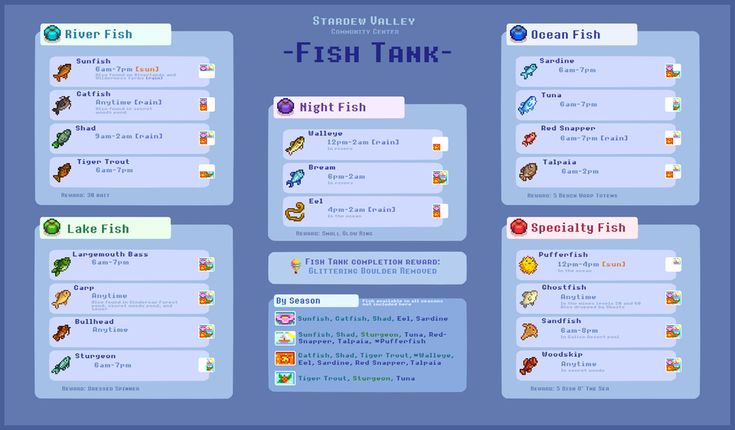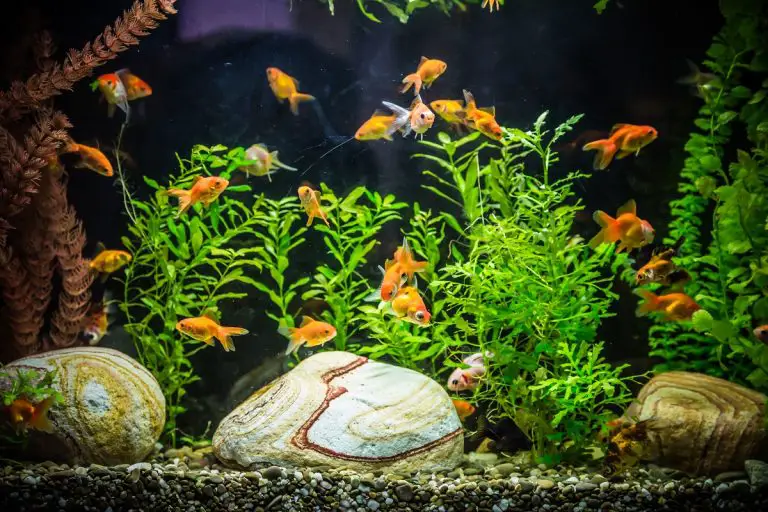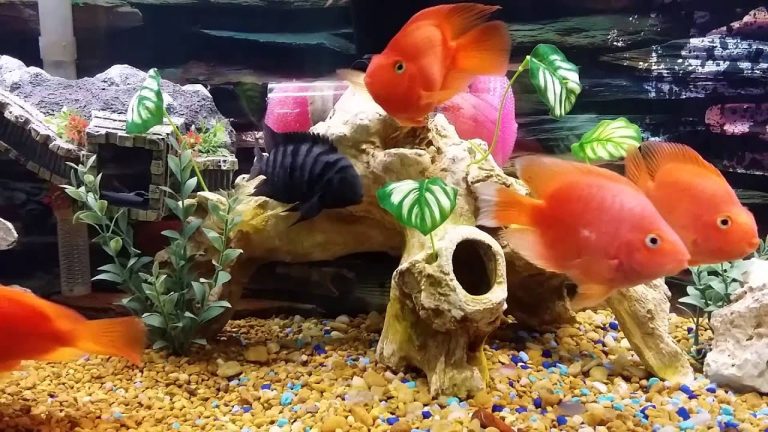What Size Fish Tank Filter Do I Get? Essential Tips and Tricks
To determine what size fish tank filter you need, you should consider the volume of water in your tank. Generally, your filter should be able to process at least four times the volume of your tank per hour.
When setting up an aquarium, selecting the appropriate filter is crucial to maintaining a healthy environment for your fish and plants. A filter helps to remove waste, excess food, and other debris from the water. However, choosing the right filter can be a tricky task as there are many factors to consider, including the size of the aquarium, the types and number of fish, and the filtration options available.
Moreover, selecting the correct size of filter is important. If you choose a filter that is too small, it won’t be able to handle the amount of waste produced by your aquatic pets. On the other hand, a filter that is too large can create an excessive current that disturbs your fish too much. Read on to learn how to determine the appropriate size of filter for your aquarium.

Credit: www.amazon.com
Factors To Consider When Selecting The Right Fish Tank Filter Size
Selecting the right-sized fish tank filter is an essential aspect of maintaining a healthy aquarium environment. Factors such as the size of the aquarium, types of fish, location of the fish tank, water flow rate, and filter type all contribute to selecting the correct size filter.
Here are some key points to consider:
Size Of The Aquarium
The size of the aquarium plays a critical role in determining the appropriate size filter. A filter’s effectiveness depends on the amount of water it can process. Generally, the filter should be able to process about four times the amount of water present in the aquarium.
Here are some general guidelines to consider:
- For a small aquarium, selecting a filter that processes 20-40 gallons of water per hour is adequate.
- A medium-sized aquarium requires a filter processing 40-80 gallons of water per hour.
- A large aquarium needs a filter that processes more than 80 gallons of water per hour.
Type Of Fish
Different fish types generate various amounts of waste and debris, and this has to be taken into consideration when selecting the right-sized filter.
- For small, non-aggressive fish, a filter processing 20-40 gallons per hour, is suitable.
- For large, messy fish or a tank with many fish, a filter processing 50-70 gallons per hour is necessary.
- If the aquarium contains lots of plants, a filter that processes 5 to 10 times the tank volume per hour is recommended.
Fish Tank Location
Placement of the fish tank also influences filter size selection. For instance, if the aquarium is placed in an area with high temperatures or zero humidity, the fish tank’s water will deteriorate faster, and a larger filter will be necessary.
Water Flow Rate
When selecting the right-sized filter, it’s vital to consider the flow rate of the fish tank water. Water flow rates influence the filter’s effectiveness and the amount of bacteria that will be able to establish in the filter. Here are some tips:
- For planted tanks, a flow rate of 4-6 times the tank volume per hour is best.
- For reef tanks, water flow rates of 15-20 times the tank volume per hour is an appropriate choice.
Filter Type
The final consideration when selecting the right-sized filter is filter type. With various filters on the market, it’s essential to select the kind that performs optimally for your aquarium’s needs.
- Canister filters: Suitable for heavy pollutants and large aquariums due to their strength and filtration capabilities.
- Hang-on-back filters: Great for small aquariums or tanks with low to medium fish biomass because of their simplicity and ease of use.
- Sponge filters: Efficient for small aquariums with fewer fish or aquariums that house fries and shrimp.
Choosing the right-sized filter for an aquarium is essential to maintain a healthy aquarium environment. Factors such as aquarium size, fish type, location, water flow rates, and filter types should all be considered before making a decision.
Understanding The Basics Of Fish Tank Filters
Fish keeping can be an incredibly soothing and satisfying hobby, provided you take the required care to ensure the health and well-being of your aquatic pets. One essential aspect of fish keeping is understanding the importance of the right-sized fish tank filter.
So, if you’re new to this hobby and still unsure about what size fish tank filter you should get, you’re in the right place. We’ll delve into the basics of fish tank filters, explore the various types of filters available, and explain how they work.
The Role Of Fish Tank Filters
A fish tank filter is an integral part of any aquarium setup as it plays multiple critical roles. It is not merely a device that cleans up the water in your tank. Still, more importantly, it ensures your fish and other aquatic pets have a healthy and safe environment to thrive in.
Below are some of the key roles of a fish tank filter:
- Removes toxic substances: Fish generate waste, which, if allowed to accumulate, can cause ammonia and nitrate levels to soar, creating a toxic environment that can prove fatal to your fish. A filter removes pollutants before they can cause any problems.
- Creates water movement: Fish need oxygen to survive, and a filter’s action help agitate the water surface to promote gas exchange and increase dissolved oxygen levels.
- Enhances beneficial bacterial growth: A filter provides a substrate for beneficial bacteria to colonize, which helps to reduce harmful nitrate and ammonia levels in your tank.
Types Of Fish Tank Filters
Several types of fish tank filters are available in the market, each working differently. These fish filters are:
- Hang-on-back filters (hobs): These filters hang off the back of the tank and pump water through a cartridge system.
- Canister filters: These are external filters that use a canister to hold the filter media and pump water back into the tank.
- Sponge filters: These filters operate using a sponge that provides a surface for good bacteria to grow, helping to break down waste and other contaminants.
- Undergravel filters (ugf): These filters use a plate with holes placed under the gravel, allowing water to flow through the gravel bed, reducing harmful pollutants.
- Power filters: These are adaptable filters that you can place in corner boxes or hang off the tank’s rim, pulling water in via an intake tube and pushing it back into the aquarium via outflow nozzles.
How Filters Work
Each filter type follows a unique mechanism using different media. However, the basic principle is to push the aquarium’s water through the filter media (sponge, cartridge, ugf, canister), holding beneficial bacteria that helps converts toxins into less harmful substances, and ultimately returning the filtered water back to the aquarium.
Different fish tanks will require different filter types based on their sizes. Knowing the volume of water in your aquarium is important, as it helps you to appropriately calculate the filter size needed for your tank.
To sum it up, understanding the basics of fish tank filters is crucial to ensure your fish live in a healthy and safe environment. By knowing the role of a filter, the types available, and how they function, you can make an informed decision on which filter is appropriate for your aquarium setup.
How To Calculate The Ideal Fish Tank Filter Size
When planning for a fish tank, the size of the tank is crucial for the well-being of the inhabitants. It is not just the size of the tank that comes into play, but also the filter size, which helps maintain clean and healthy water for your fish.
Here, we will walk you through the steps to calculate the ideal fish tank filter size.
Assessing The Size Of The Aquarium:
Before choosing a filter, you must first determine the size of your aquarium. The larger the tank, the more filtration it will require. One rule of thumb for assessing aquarium size is:
- 1 inch of fish for every gallon of water
However, this does not represent the exact requirements for all fish species. For example, some species, such as goldfish, need more space than others. It is essential to research the specific needs of the fish you want to keep and understand the rules of thumb before choosing the appropriate filter.
Matching The Filter Size With Tank Size:
In general, the recommended filter size is at least four times the aquarium’s volume. Here are some general guidelines to follow:
- For an aquarium of 20 gallons or more, choose a filter with a flow rate of 100-200 gallons per hour (gph).
- For an aquarium of 40-55 gallons, select a filter with a flow rate of 200-400 gph.
- For an aquarium of 75 gallons or larger, go for a filter with a flow rate of 500 gph and above.
It is important to note that these are general guidelines. Specific types of fish and their individual requirements must not be ignored.
Calculating Ideal Filter Capacity:
To calculate the ideal filter capacity, you need to consider the type of filter. There are three types of filters: mechanical, chemical, and biological.
- Mechanical filters remove debris and particles through a physical filter medium.
- Chemical filters use activated carbon and resin beads to remove dissolved impurities and odors.
- Biological filters use beneficial bacteria to convert toxic substances such as ammonia and nitrites into less harmful nitrates.
The ideal filter size also depends on what you want to achieve from the tank. If you want to keep a heavily stocked aquarium, it requires a more vigorous filtration system. Determine which filter or combination of filters will work best for you.
Using Online Tools For Assistance:
There are multiple online calculators available to help determine the appropriate filter size. Many of those calculators are free and easy to use. These calculators simplify the process of calculating the ideal filter size by just requiring the dimensions of your aquarium and the volume of water.
It is essential to comprehend the fish species’ specific needs before choosing filters for your aquarium. Matching the filter size with the tank size is crucial, and you must calculate the ideal filter capacity depending on the filter type and the desired outcome.
Use online tools as a reference, but do not rely solely on them. By following these guidelines, you can provide a healthier environment for your fish, giving them a longer and more joyful life.
Maintenance Of Fish Tank Filters
Keeping a fish tank is exciting yet requires commitment to ensure that aquatic life thrives in a conducive environment. One way of ensuring that the fish tank is in excellent condition is through proper filtration maintenance. In this post, we look at the critical aspects of maintaining fish tank filters.
Proper Cleaning Methods
There are various steps you should follow to ensure that you clean the filter correctly. These include:
- Turn off the filter before cleaning.
- Remove the filter media and rinse it gently using the tank water.
- Clean the filter and its parts using a soft-bristled brush and tank water.
- Reassemble the filter and restart it.
Frequency Of Cleaning
Regular cleaning of fish tank filters is essential to keep your aquarium healthy. How often you clean your filter depends on the size of the aquarium, number of fish, and the type of filter. As a general guideline, low to medium-sized tanks with fewer fish require monthly cleaning while larger tanks and heavily stocked tanks might need cleaning weekly.
Replacing The Filter Media
Over time, the filter media (sponges and cartridges) may become clogged with debris, affecting the filtration process. Knowing when to replace your filter media is crucial. Typically, filter media require replacing at least once a month, depending on usage rates and biological loads.
Indicators That A Filter Needs Cleaning
Several signs indicate that the filter in your aquarium might require cleaning. These include:
- Reduced water flow rate
- Unusual noises from the filter
- Dirty or cloudy water in the aquarium
Maintenance Tips For Longevity Of Filters
To increase the lifespan of your fish tank filters, consider the following tips:
- Avoid overfeeding your fish. Uneaten food can decompose, causing more debris to accumulate in the filters.
- Carefully clean all parts of the filter and the aquarium to prevent accumulation of waste.
- Avoid using chlorinated water, as it can kill off beneficial bacteria in the tank.
- Consider using a filter cleaning agent to dissolve stubborn dirt particles.
Taking care of your fish tank filters is vital for the well-being of aquatic life. By following the above tips, you can maintain your aquarium with ease, ensuring healthy and happy fish.
Frequently Asked Questions For What Size Fish Tank Filter Do I Get
What Size Fish Tank Filter Do I Need For A 10 Gallon Tank?
For a 10 gallon tank, a filter with a flow rate of 40-50 gallons per hour is recommended.
How Often Should I Replace My Fish Tank Filter?
Replace filter media every 4 weeks, and the entire filter every 6 months to maintain efficiency.
Do I Need A Filter For My Fish Tank?
Yes, a filter is essential in maintaining a healthy and clean environment for your fish to thrive in.
Should My Fish Tank Filter Be Noisy?
No, a quiet filter with adjustable flow rate is recommended to prevent disturbing your fish’s habitat.
Conclusion
After reading this article, you must now have a clear understanding of what size fish tank filter you should get based on your tank size and fish species. Remember to always choose a filter that provides at least three to four times the volume of water in your tank, and that matches the unique needs of your aquatic pets.
It’s vital to prioritize the health and well-being of your fish by ensuring they have clean and well-filtered water. Maintaining your filter and performing regular water changes are also crucial to ensure your aquarium remains a safe and healthy environment for your finned friends.
Now that you have the knowledge, go ahead and enjoy setting up your new filter and watch your fish thrive in their sparkling clean aquatic home.






